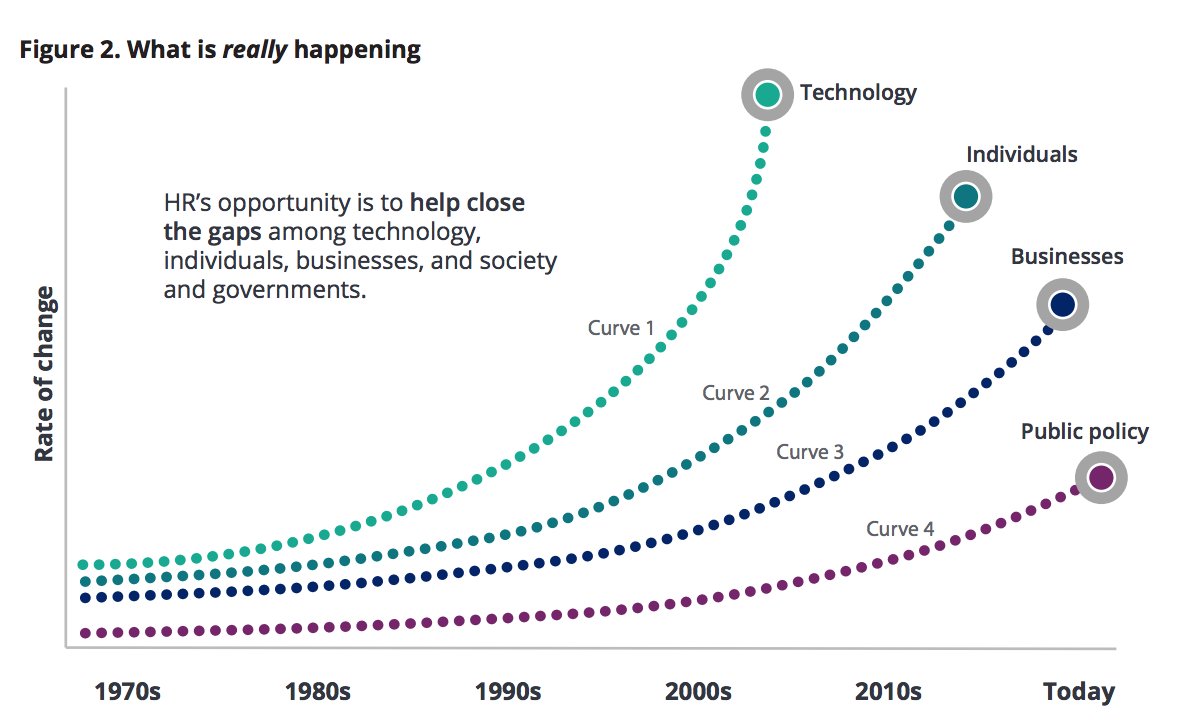Saying the right words isn’t enough to keep you and your organization afloat anymore.
For most of us at the leadership level, this is simple truth.
Mission, vision, and values have their place — but without action, on the part of you and your employees, those are useless buzzwords.
One of the most common areas of complaint we hear from managers and CSRs on the front line is this:
Operations decision-makers are not willing to evolve the digital toolset fast enough to meet user demands and advancements in expertise.
Translation: The people making the sales and driving the revenue at your company need the right tools to do their jobs — and they might not be getting them.

Let’s look at some cold, hard numbers for a moment:
- Only 12 percent of the Fortune 500 companies from 1955 are still in business, and in 2016 alone, 26 percent fell off the list.
- Companies who have the most digitally-capable leaders financially outperform average companies by 50%.
- U.S. citizens look at their mobile phones 8 billion times a day. Yet much of the traditional and legacy technology large and enterprise companies use doesn’t work well on mobile.
Surprised yet?
No?
Let's try this...
A McKinsey study found that higher growth rates portend sustained success. In fact, growth matters more to success than margin or cost structure. Growing faster has twice as much impact on share price as improving margins.
The numbers and statistics do vary a bit by industry, but if trends hold true, in 2025:
- 50% of occupations today will no longer exist
- New jobs will require creative intelligence, social and emotional intelligence, and the ability to leverage artificial intelligence
- Corporations will not only need to be lean and agile, they will also have to be authentic to attract talent — authentic in their values and in making a contribution to the social good
So, back to my point: It’s not good enough to just say you want to get everyone on the same page, singing from the same hymn sheet. If you’re leaving the bulk of the responsibility of finding that information to your employees, those are empty words. And you can forget about growth, much less retaining talent.
Technology-enabled growth is the root of success in today’s fast-changing business landscape, but too many leadership teams aren’t translating that into actions that support employees on the ground.
The gap is glaringly obvious in this rate-of-change chart from Deloitte:

Rigth?
Technology is changing at the fastest possible pace. Individuals are changing almost as fast. And business isn’t keeping up with either.
Employee Satisfaction Isn’t Important — It’s EVERYTHING
Only 14% of CEOs say they have the talent they need to execute their business strategies. Where is all the talent going?
Elsewhere.
Employees no longer have to stay with companies that don’t support them. It’s easy to find a job with another company that promises to do better.
Let’s use content management in retail operations as an example here, since that’s a topic that regularlly keeps me up at night :)
If leadership is saying that getting accurate information out to their stores really matters to their success — shouldn’t they be looking for a better way to get that accurate information to teams in the field than telling them to log in to a shared file drive from their back office?
Yes. Of course.
In reality, though, many retail operations leaders think it’s “just easier” to go with an old standby like SharePoint or Microsoft OneDrive.
Sure. It’s easier for them. (Or so they think.)
It’s NOT easier for the users, however.
It’s NOT easier in the field, away from a desktop computer, with spotty internet.
There’s a new wave of content management systems (yup, Showcase is one of them) that actually work well for the people who use them every day and who's success relies on access to the right information.
Users get access to the information they need, on the devices they already have and are familiar with. Adopting these increasingly easy-to-deploy content management systems shows staff and end-users that leadership cares about creating a good experience for them while they are doing their jobs
And it enables everyone to do their jobs better.
These new systems are a double win for operations leaders. They enable the company’s growth while also showing that they care about their employees.
So how is a clunky old intranet like SharePoint or a giant file tree like Box an “easier” solution for anyone? (Well, I suppose if you want to be downsized, ignoring your employees’ needs is an easy solution for it.)

A Good Employment Market Can Be Bad News for BSers
People simply don’t stay at the same company for life anymore. You can assume that your best talent is ripe for the picking — especially when the employment market is up. When there are plenty of jobs to go around, it’s easy for people to get jobs with companies and in industries that offer them more opportunities.
So let’s not pay lip service to our employees.
Better digital toolsets — tools that really, truly enable and empower your employees — make your business more attractive to talent. Plus, those tools give your employees a chance to grow professionally as they grow your company, learning new skills, and mastering new software and devices.
Today, it's not enough that you say you want to move at the speed of business. It's not enough that you say you care about your employees and their success. If you're not taking action, if you're not taking concrete steps toward making information, resources, and tools accessible where your employees are, it's all just empty words.